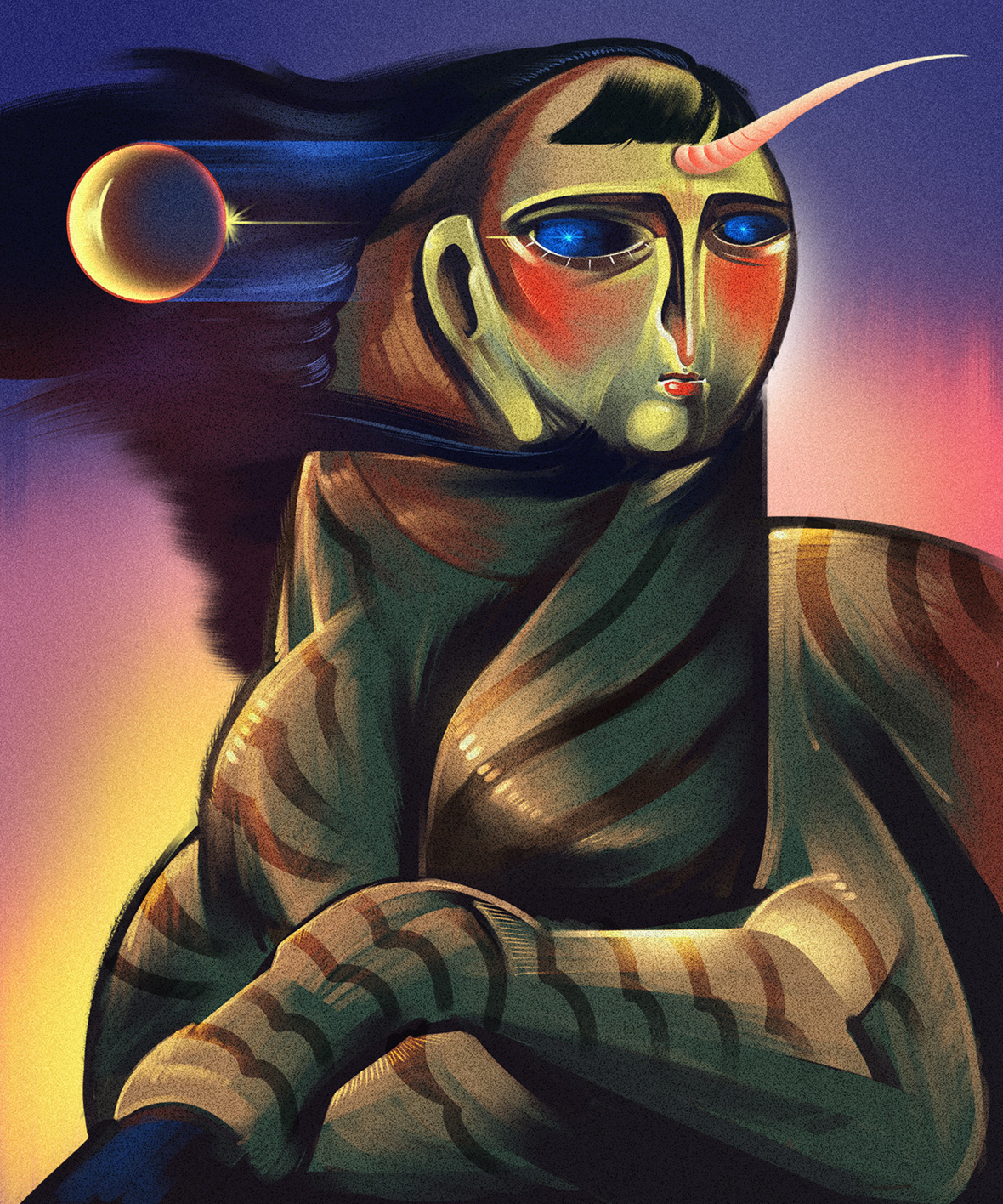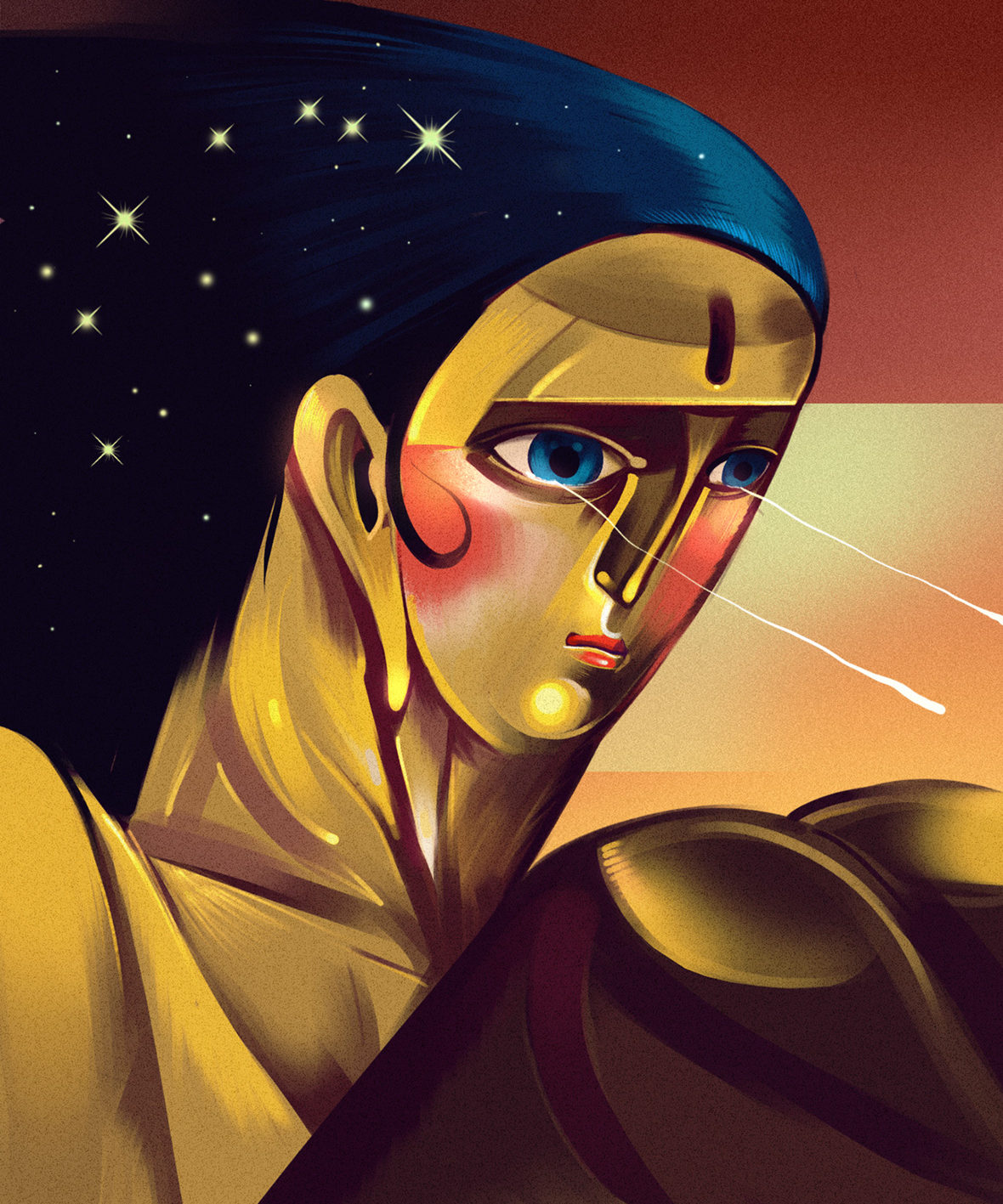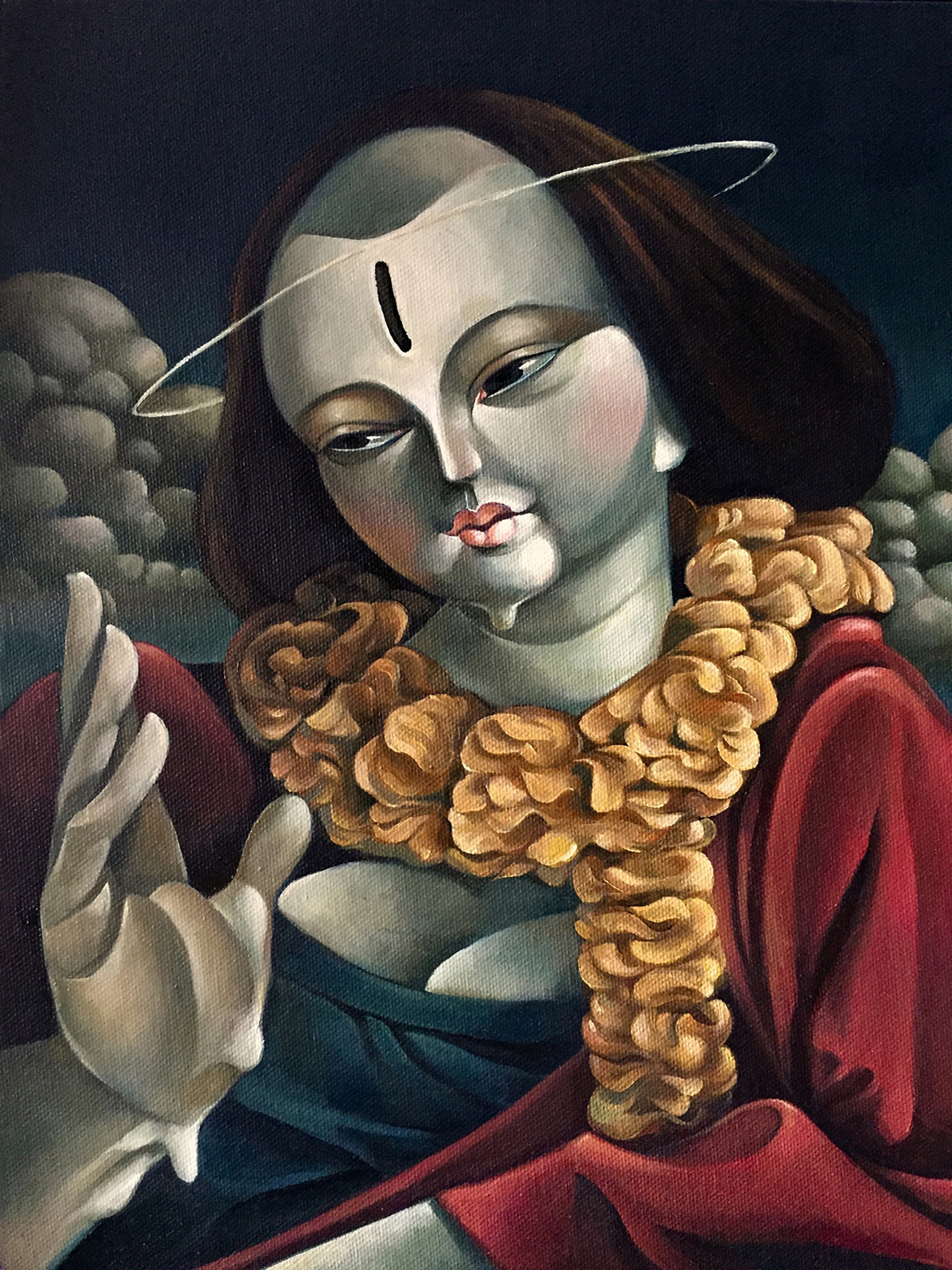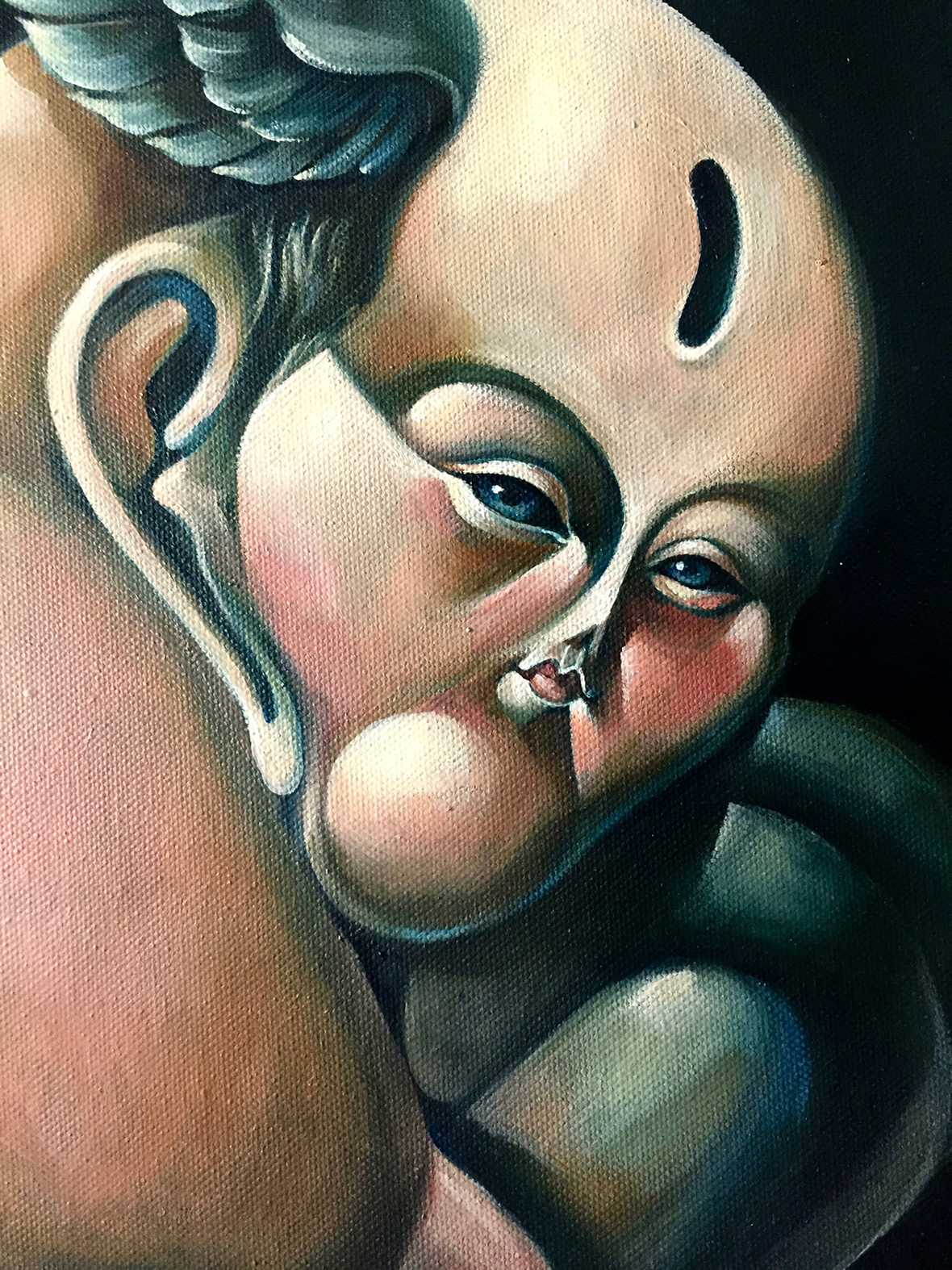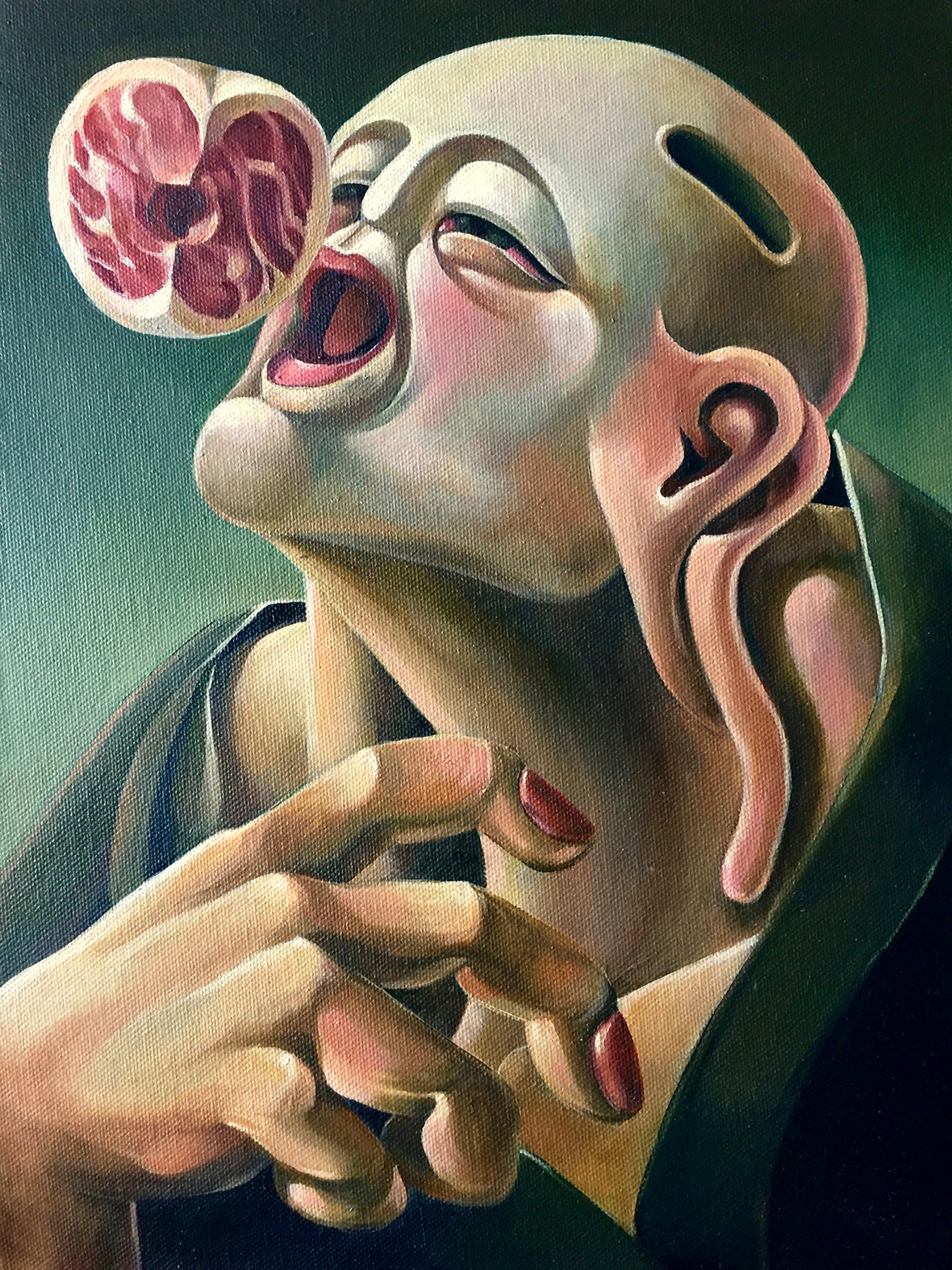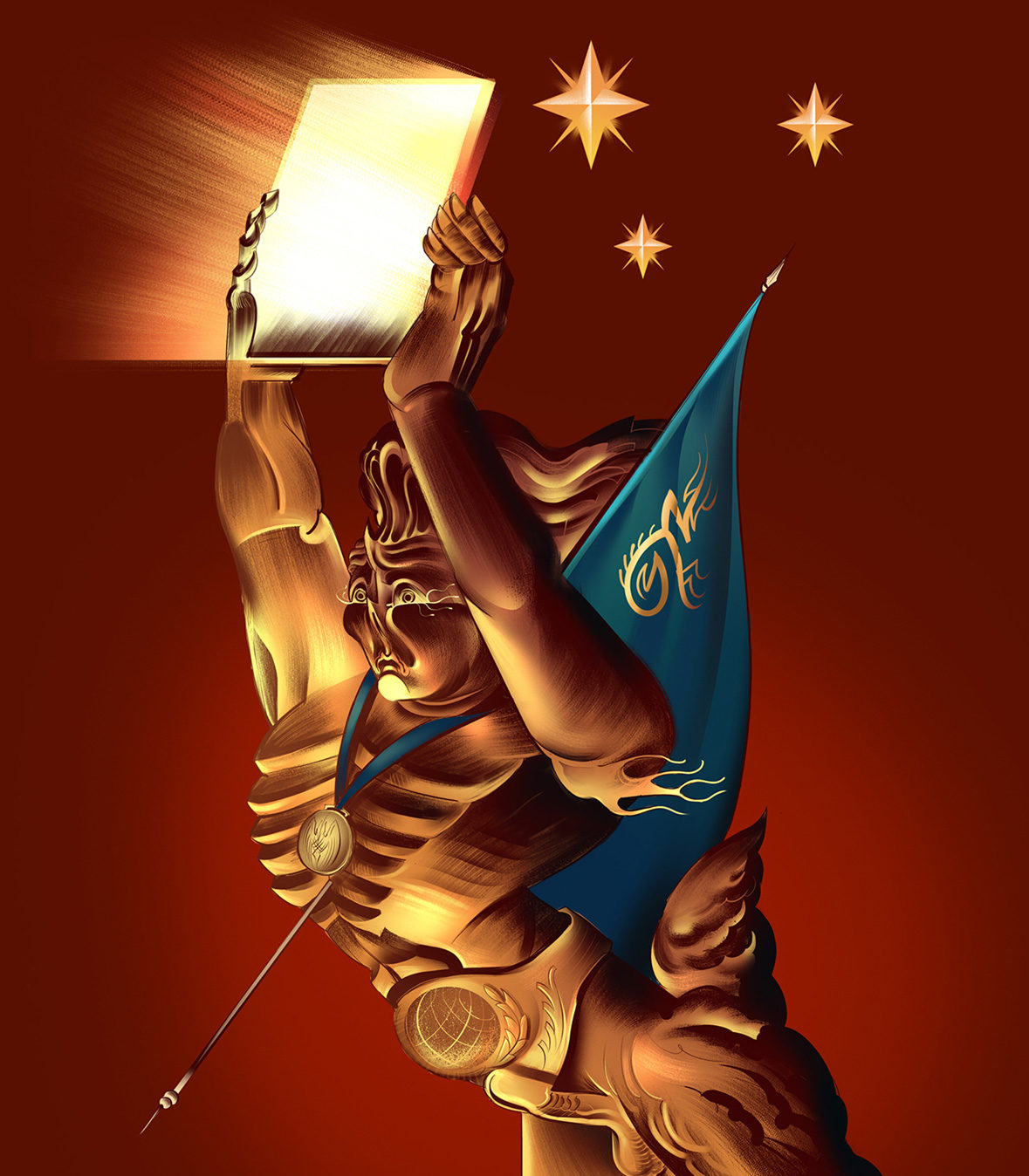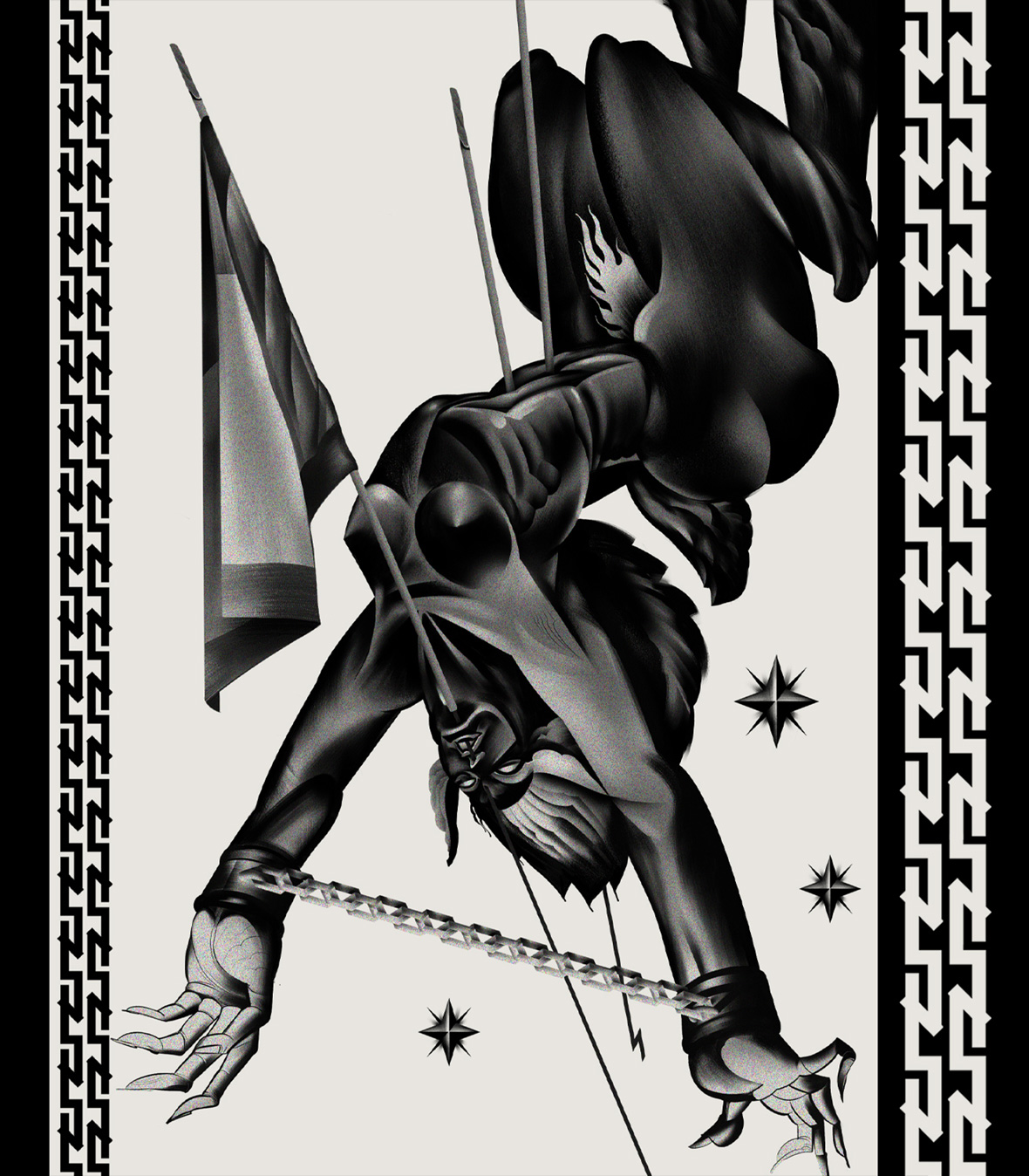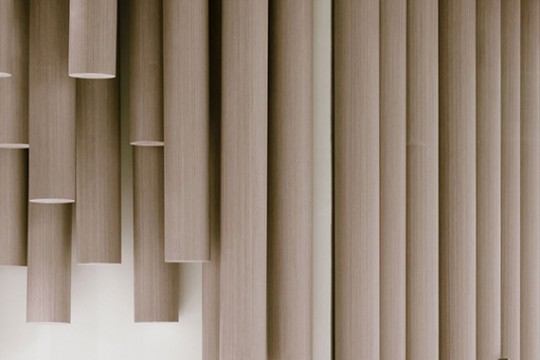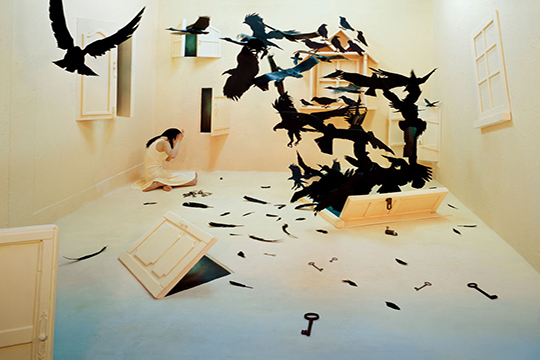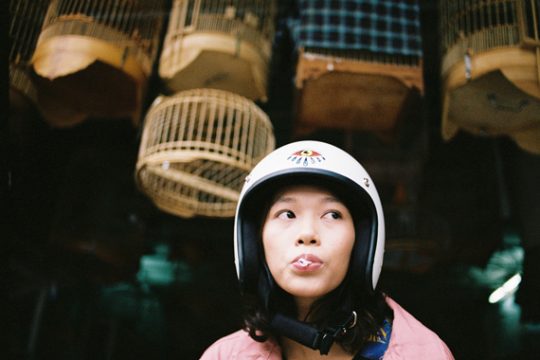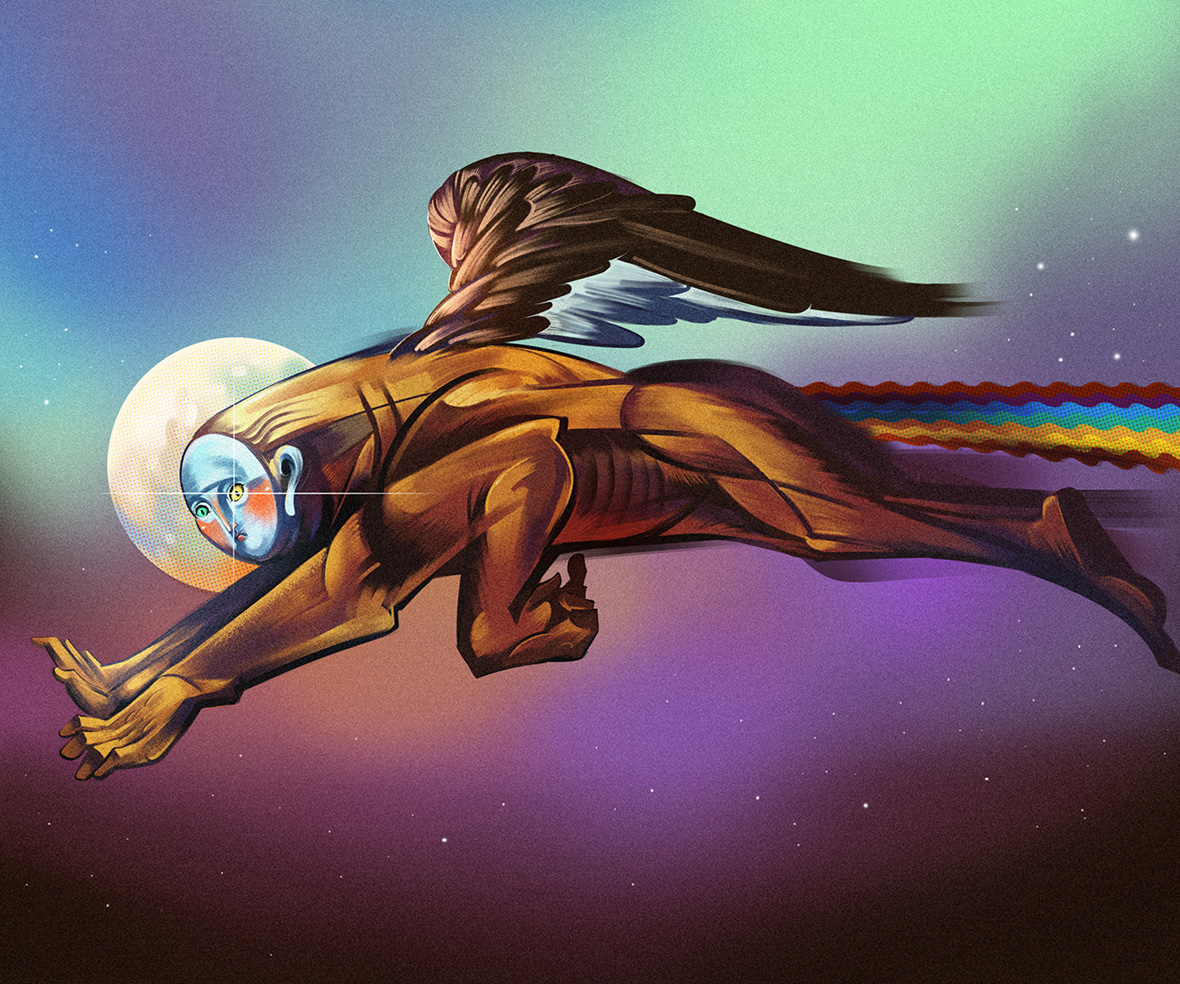
In a parallel universe with auroral skies, enraged beasts soar and rule. These god-like creatures, whose spectral shapes penetrate and haunt the imagination, are the creations of Thai artist Vasan Suwannaka, more commonly known as Aitoy. They’re the symbolic exposition of his contemplations on government, religion, and social affairs, fusing the intricacies of modern-day Thailand with a broader range of issues unfolding now throughout the world.
在极光天空的平行宇宙,庞然巨兽正展翅翱翔,气势如虹。这些神兽般的生物形似幽灵,仿佛能穿透你的想象,在脑海中萦绕不去——这是泰国艺术家 Vasan Suwannaka(又名 Aitoy)所创造的艺术世界,其中寄寓了他对政府、宗教、社会时事的思考,并将泰国现代社会错综复杂的问题与当今世界所面临的一系列问题相提并论。
Born in 1988, Aitoy grew up in an Islamic district on the outskirts of Bangkok. His lower-middle-class family sent him to a private Catholic school where most of his classmates were either Thai-Chinese or Muslims—few were Catholics. Still, every morning the children had to line up and pray the Catholic way, after which they would sing the national anthem, followed by the royal anthem honoring the King. After school, Aitoy would go home to his mother, who was a devout Buddhist. “Conflicting beliefs and cultural confusion defined my childhood; I was constantly lobbied into different directions, pulled towards what different entities wanted me to be, rather than just being myself,” Aitoy recalls. “But those experiences became my muse. They charged my creativity and my passion. Art was my salvation.”
Aitoy 生于 1988 年,在曼谷郊区一个伊斯兰地区长大。来自中下阶层家庭的他被家人送到一所私立天主教学校上学,身边大多数同学都是泰籍华人或穆斯林,只有少数是天主教徒。尽管如此,每天早晨,孩子们仍然要排着队,按着天主教的方式祈祷,之后唱国歌,然后是颂赞国王的皇家国歌。直到放学后,Aitoy 又回到作为虔诚佛教徒的母亲身边。
“我的童年充满了冲突的信念和混乱的文化。我被不同的信仰游说、拉扯,希望我成为他们想要的样子,而不仅仅是做我自己。”Aitoy 回忆说,“不过这些经历也成为了我的创作灵感,激发着我的创意和创作热情。艺术是我的救赎。”
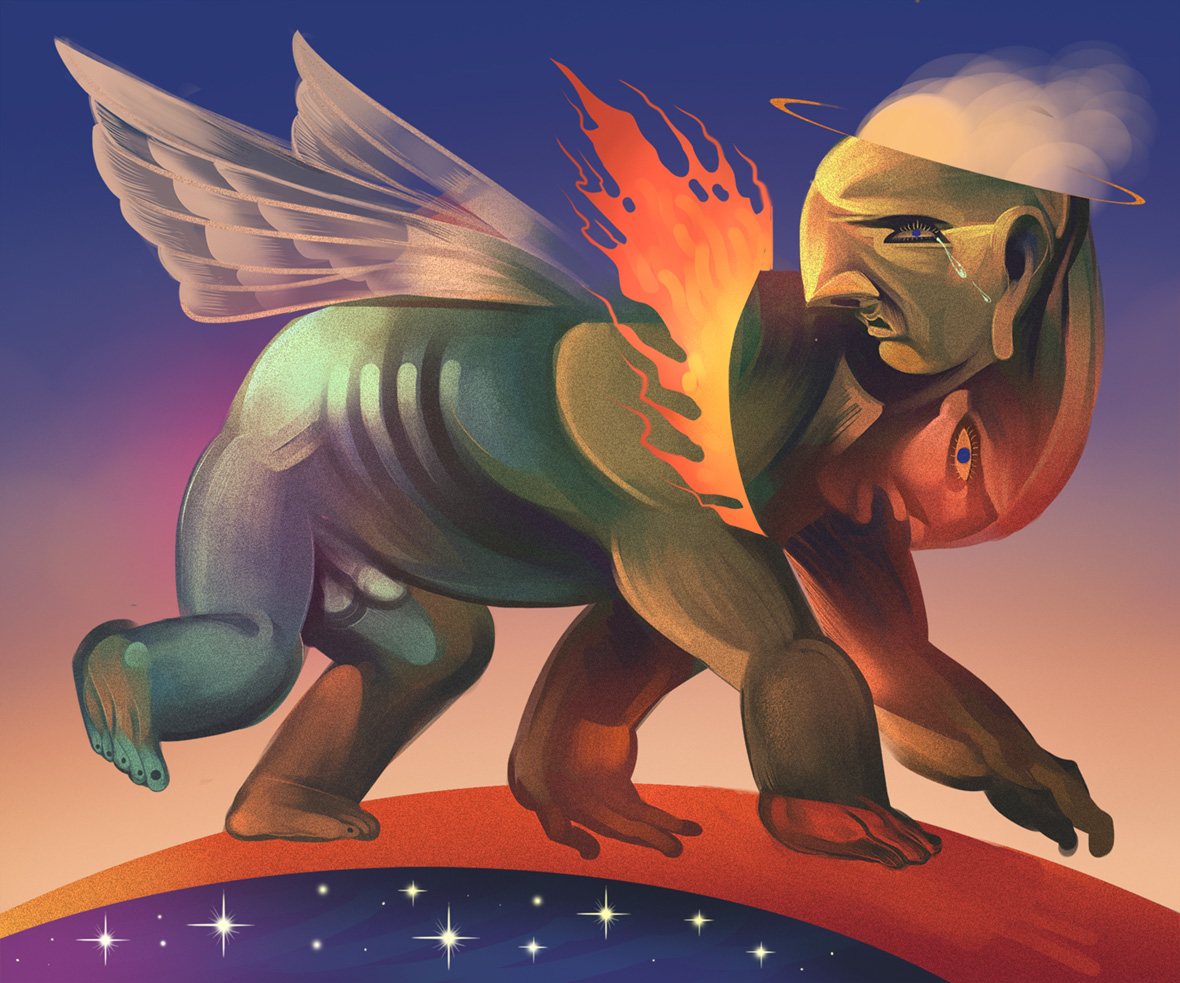
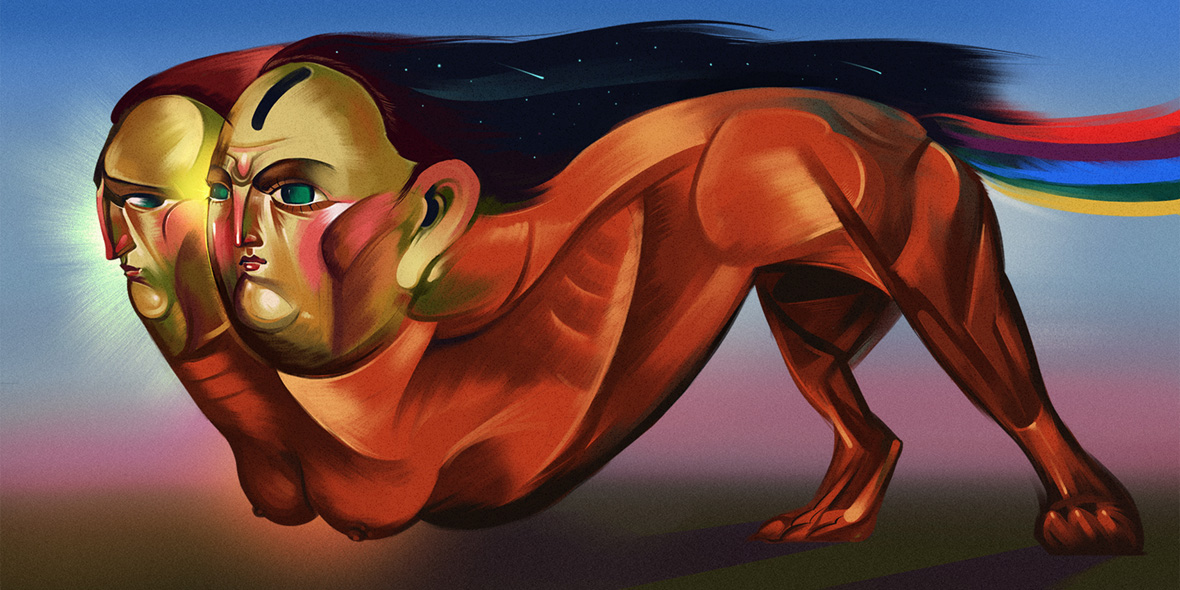
Aitoy’s work reflects the confusion of those childhood years. His paintings and drawings vary from ominous and frightful to holy and reassuring. Bearing a caustic Blakean quality, his art often borrows from mythical creatures in Thai culture. These beasts offer his scrutiny on certain religious practices. For instance, a coin hole is often visible on the foreheads of his chimeric beings, an allusion to the donation boxes almost invariably found in temples across Thailand. “It’s genius marketing, isn’t it? Asking followers to donate and they receive merits,” he asks. “I always wondered if they contribute candidly or if they just want to receive merits.”
Aitoy 的作品反映了他童年时代的困惑。他的作品中,有的充满不祥和可怖的氛围,有的却一派祥和。他的画作别具布莱克式(Blakean)风格,常常借鉴泰国文化中的神话生物,透过这些神兽对某些宗教习俗进行细致的研究。例如,他笔下的“奇美拉”神兽的额头上常常有一个硬币孔,以此映射泰国寺庙中四处可见的捐款箱。他问道:“这简直是天才般的营销方式!信徒捐款,就能收到功绩。我一直很好奇,到底这些人是真的想献爱心,或是纯粹想获得功绩。”
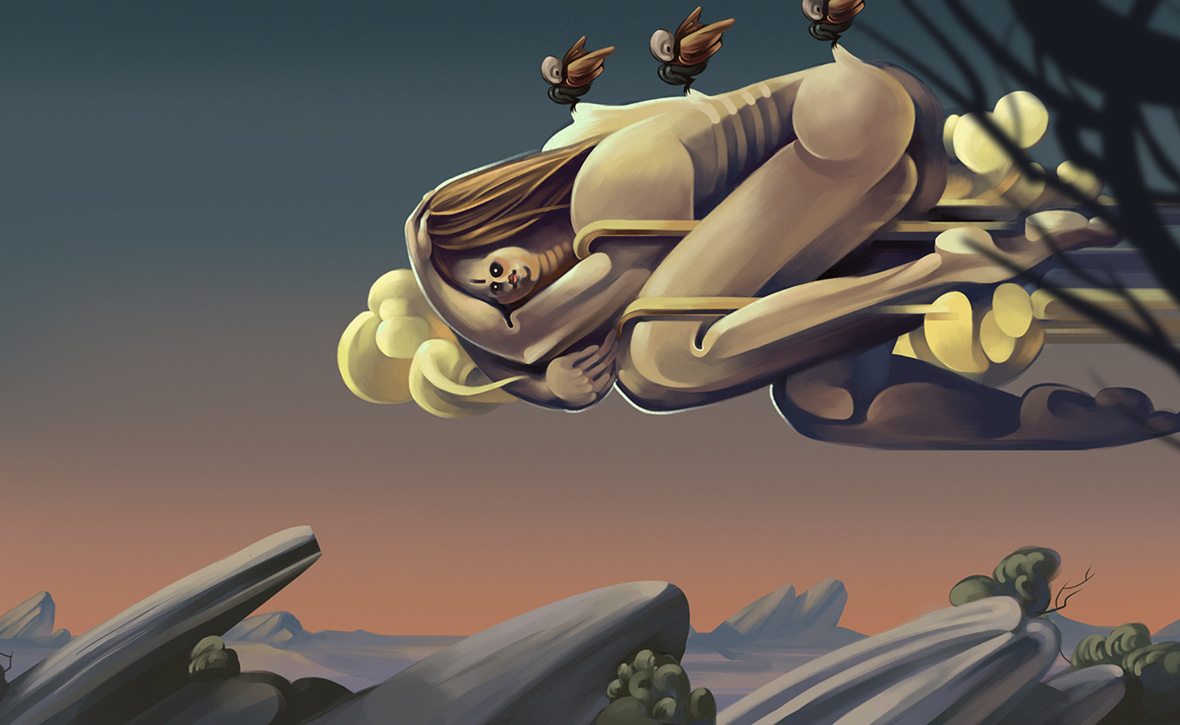
In The Four of Us, a series of drawings made with ink and pastel on cardstock, Aitoy represents the hierarchy of Thai society. The Four of Us No. 1 features a centaur-like figure holding a sickle, which he says represents the working class, those who earn just enough to sustain themselves but can’t go as far as dreaming of social mobility. Aitoy named the beast “Bovinabor,” blending the words bovine and labor. The bovine is a reference to “buffalo,” or “ควาย” in Thai, a term used when calling someone stupid or uneducated.
《The Four of Us》(《我们四人》)是 Aitoy 用墨水和蜡笔在卡纸上创作的一系列绘画,所表达的是泰国社会的等级制度。《The Four of Us No. 1》画了一个半人半马怪拿着镰刀,用来代表工人阶级,这些人的收入仅足以维持生活,要实现社会阶层的流动简直天方夜谭。Aitoy 将画中的野兽命名为“Bovinabor”,由 bovine(牛)和 labor(劳力)两个词组成。牛在泰文中是“ควาย”,用来指愚蠢或未受过教育的人。
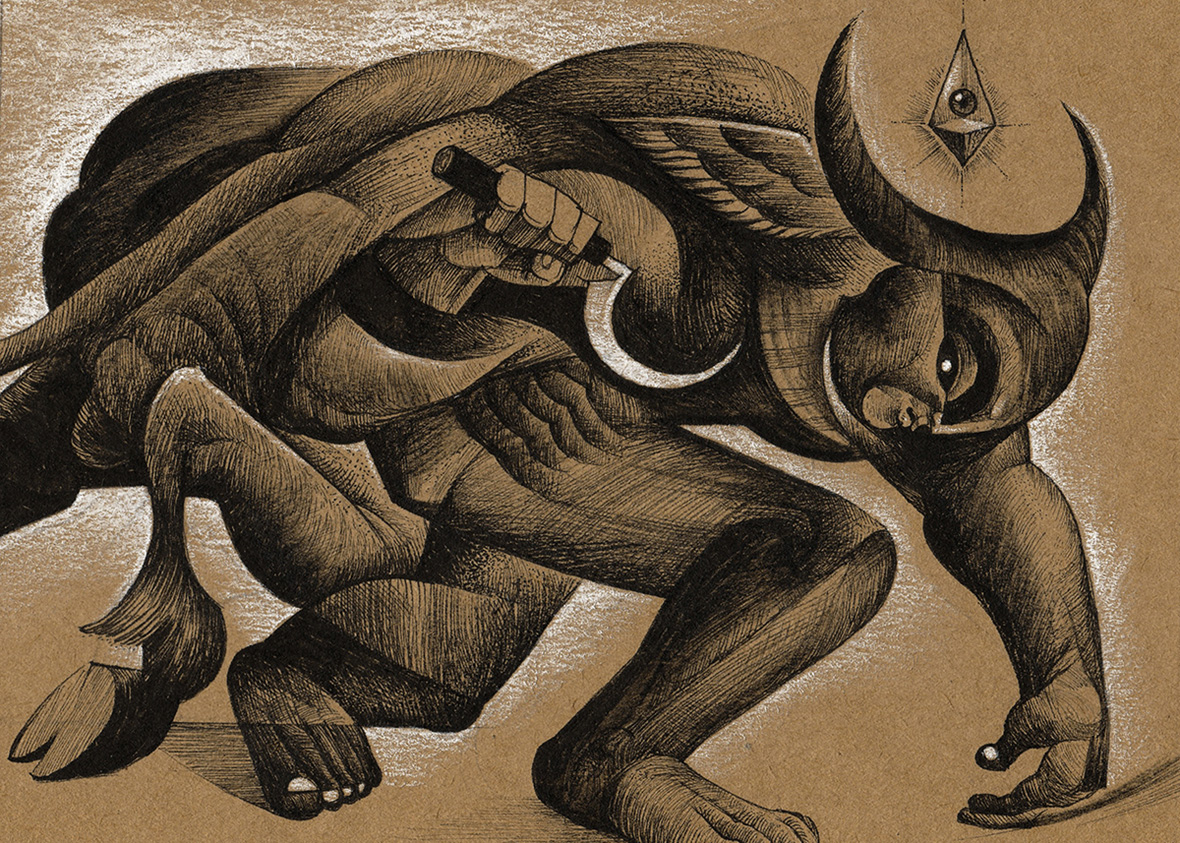
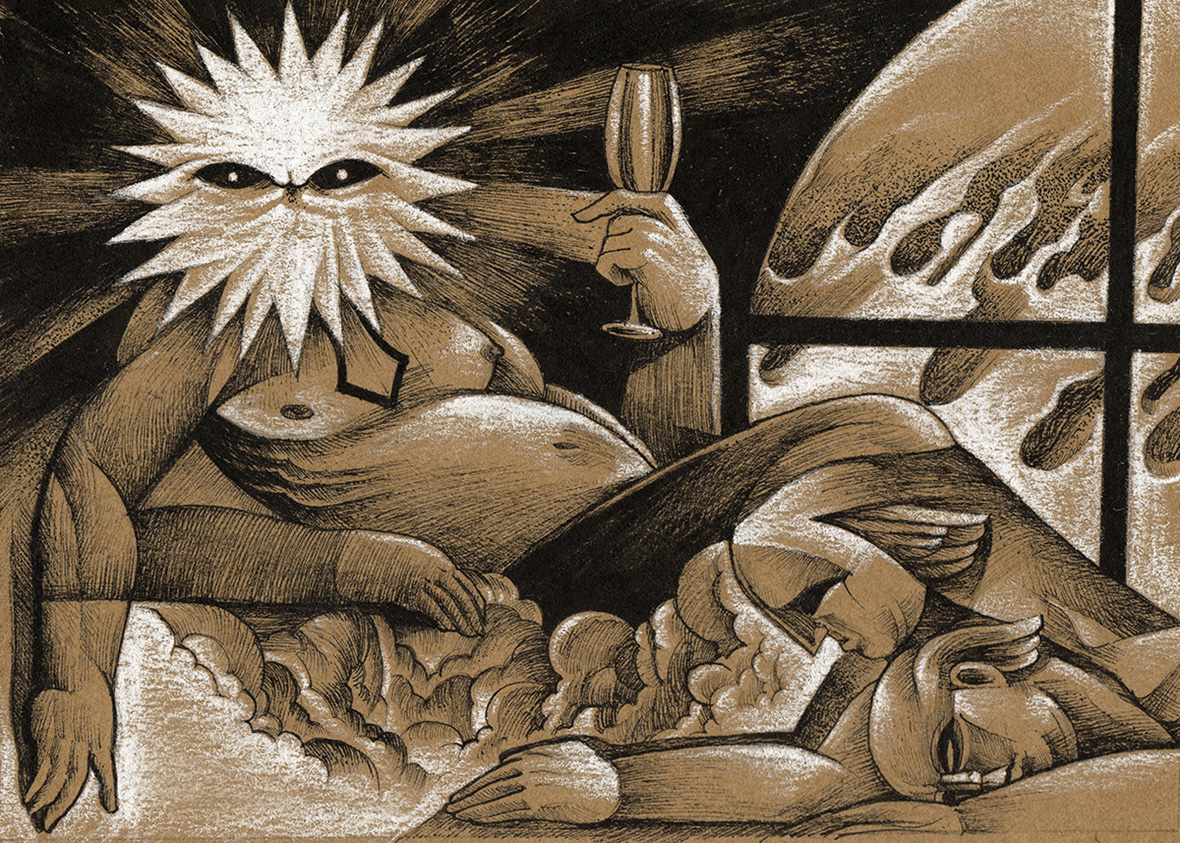
The Four of Us No. 2 is focused on middle-class urbanites. The creature takes the shape of a sheep, an easily tamed animal that moves in herds. “Because they have some access to resources, this layer of society has no political ideology, especially the upper-middle-class, who are intoxicated by consumption and materialism,” Aitoy says。
The Four of Us No. 3 depicts a human-dog hybrid on a collar, holding a missile. “With hunter spirits, these ‘dogs’ were born to serve an imaginary state,” says Aitoy. Violent and dangerous, this creature represents the military, but it bows to the ground before a higher entity: The Four of Us No. 4 is based on the Hindu God Rama, and the deity in Aitoy’s drawing represents the Thai Kings of the current dynasty. The godly figure lies magnanimously on the clouds, with a protuberant belly and holding a champagne glass, while his subjects kneel before him.
《The Four of Us No. 2》聚焦于城市中产阶级。图中的神兽呈现出绵羊的外形,一种易于驯服、成群移动的动物。Aitoy 说:“这些人能够获得一定的资源,所以这个阶层的人们没有政治意识形态,特别是中上阶层,他们完全沉迷于消费和物质主义。”
《The Four of Us No. 3》画了戴着颈圈的人与狗的混合体,手上还拿着一枚导弹。Aitoy 说: “这些‘狗’充满狩猎精神,天生就为一个虚幻的政权服务。”画中的生物代表着军队,他们虽然暴力而危险,但却对更高的权力俯首称臣。而《The Four of Us No. 4》的原型则是印度教神罗摩(Rama),在 Aitoy 的画中代表了现代的泰国国王。这个尊贵的人物躺在云层之上,大腹便便,手上举着香槟杯,而他的臣民则跪在他身前。
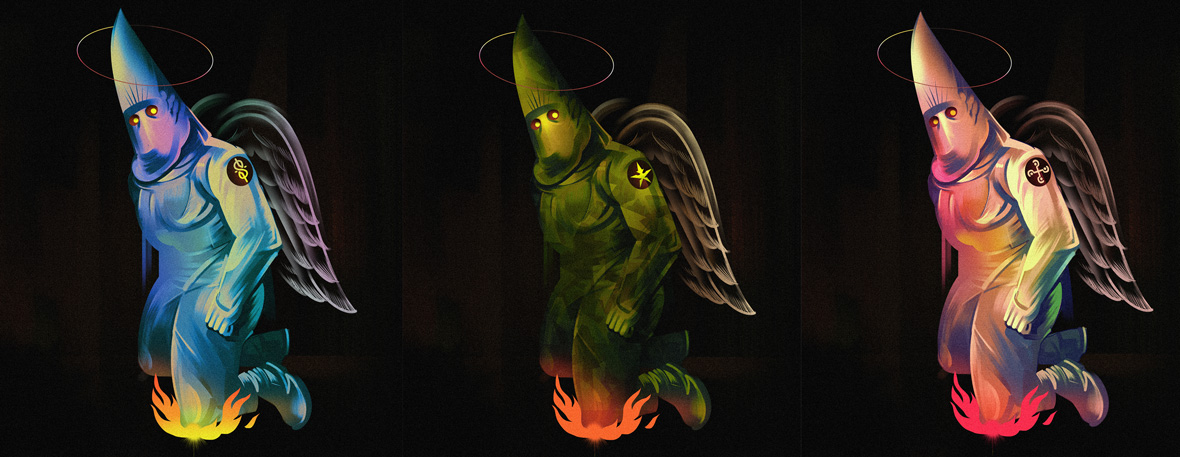
Another series, The Holy Knee is a far more obvious triptych. Aitoy depicts Ku Klux Klan members kneeling on flames—a direct reference to the murder of George Floyd by a police officer. He distinguishes the three figures as The Racist, The Capitalist, and The Authoritarian. The dichotomy in their appearance is striking: despite their crazed eyes and violent act, they have angel wings and aureoles. Aitoy compares the George Floyd incident to similar issues of police brutality in Thailand. “Segregation and categorization always happen when people stand on the opposite side of ‘Thai ideals,'” he says.
他的另一个系列《The Holy Knee》(《神圣的膝盖》)是更明显的三联画。Aitoy 描画了三 K 党成员跪在火上,直指美国警察杀害乔治·弗洛伊德(George Floyd)的事件。他将三幅画中的人物分别定为“种族主义者”、“资本家”和“独裁者”,三人的外表充满着强烈的矛盾:尽管他们的眼神疯狂、行为暴虐,但身上却长着天使的翅膀和金色的光环。Aitoy 将弗洛伊德事件与泰国类似的警察暴行问题进行了比较。他说:“当人们站在‘理想泰国’的对立面时,总会出现种族隔离和类型化的问题。”
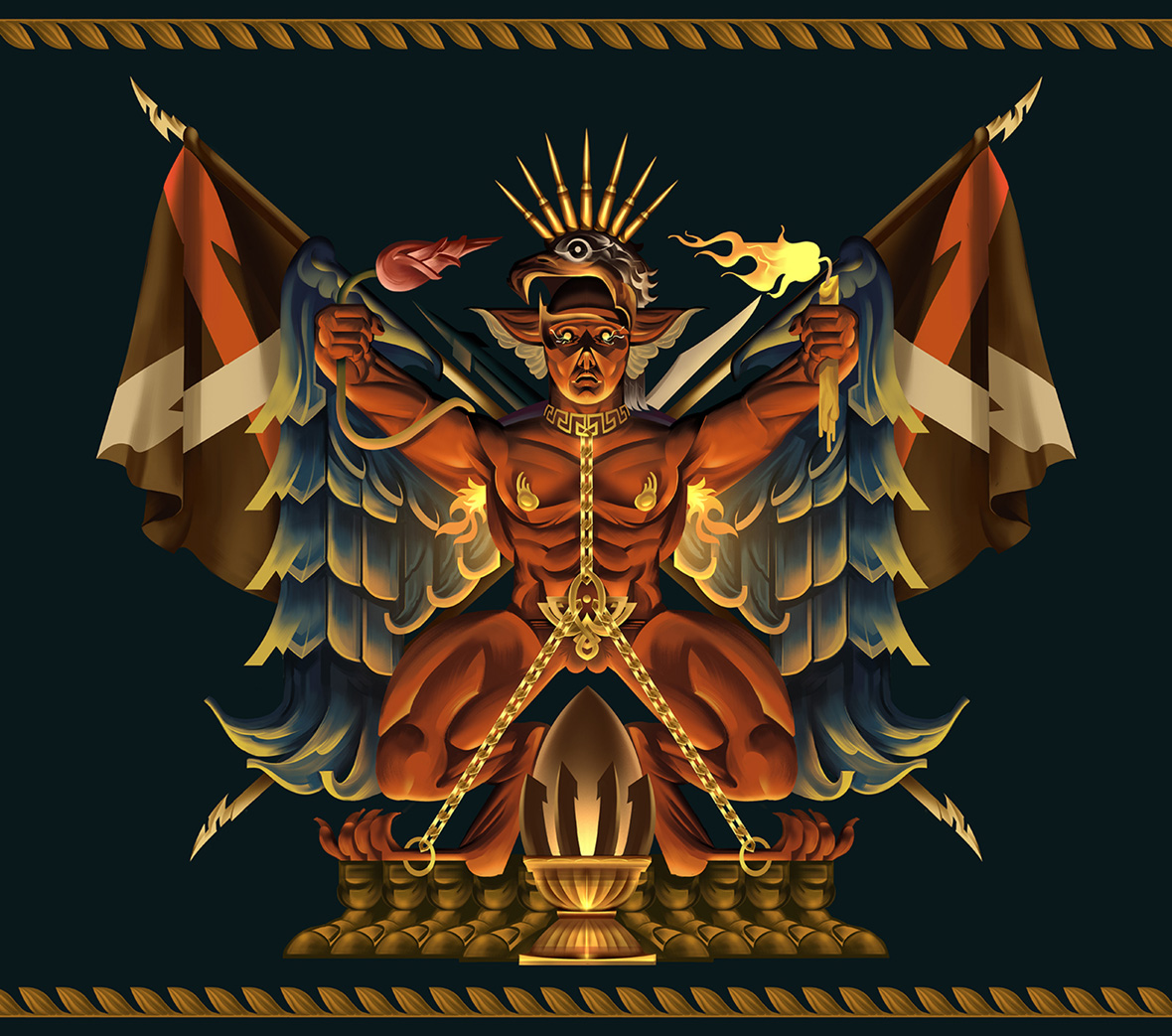
It’s also common for Aitoy to draw inspiration from the grandeur of nationalistic monuments. In Vahana of God: The Emblem of a Sacred State, a hyper-masculine figure stands heroically on a pedestal, a symbol of the hazards of inflamed patriotism. Once more, Aitoy’s looked to his school years for inspiration. “They taught me to feel proud of my national identity and to hate a neighboring country because of a war that happened centuries ago,” he says, referring to the Burmese–Siamese Wars.
除此之外,Aitoy 也常常从一些宏伟的民族古迹中汲取灵感。在《Vahana of God: The Emblem of a Sacred State》中,一个充满阳刚气息的男性形象以英雄的姿态站在台座上,寓意高涨的爱国主义情绪所潜藏的危险。除此之外,Aitoy 也常从自己的求学时代中找寻灵感。他说:“他们教我要为自己的民族身份感到自豪,同时因为几百年前发生的战争而仇恨邻国。”他指的是缅甸暹罗战争。
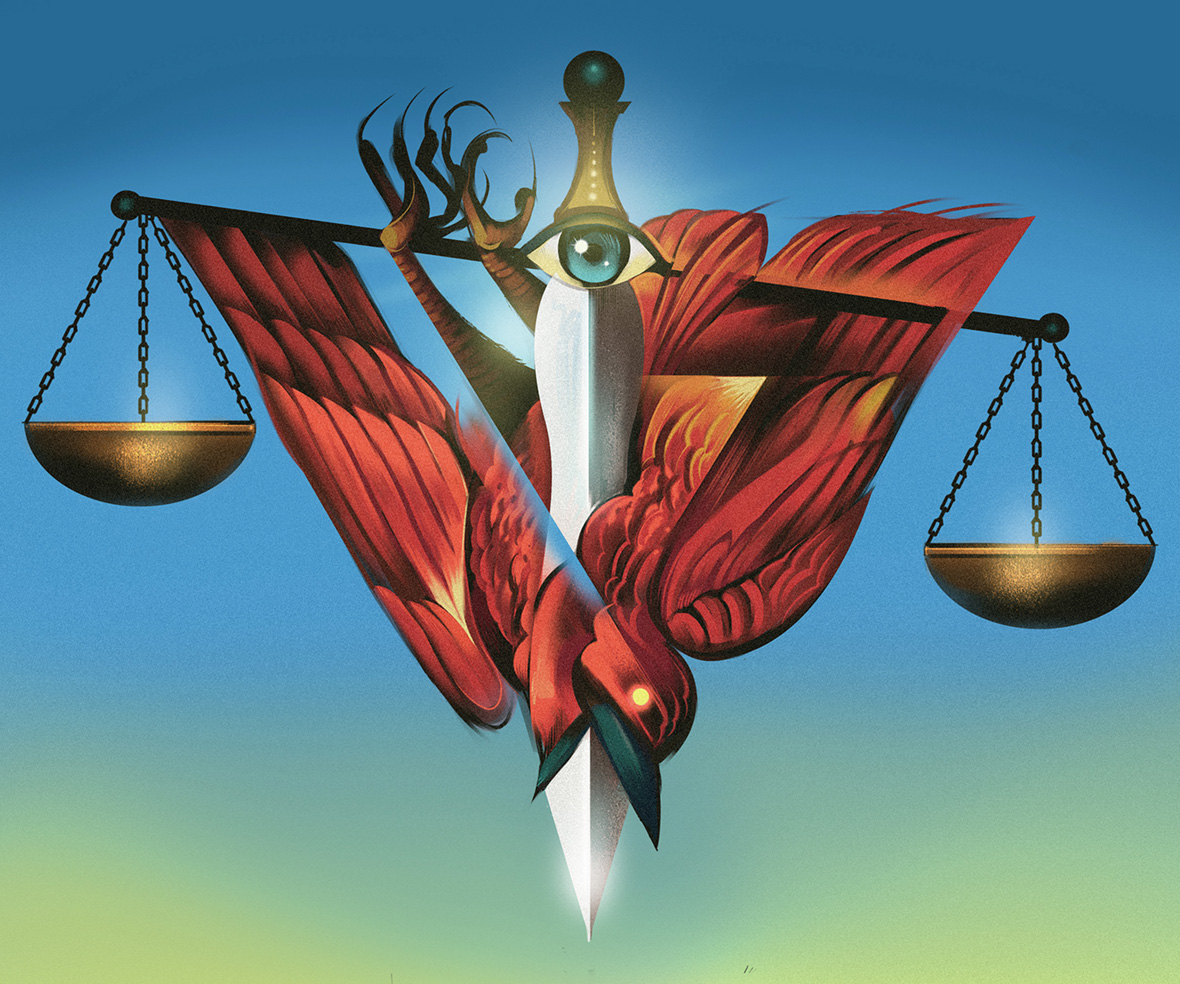
Even though Aitoy speaks loudly about his views of Thailand under the military junta, he has faced no problems with the authorities so far. “Most Thai officials can only think in very narrow ways. I can only assume my work is too complex for them,” he laughs. Despite the adversities he faces, he holds a rather optimistic outlook. Aitoy believes that change is underway and hopes his work can be a small part of it. His art unflinchingly puts the vicious sides of the modern world on full display. For those who read between the lines, these works send powerful messages capable of instigating thought—and perhaps action.
到目前为止,Aitoy 还未曾因为对军政府统治下的泰国大胆发声而遭到政府当局的为难。他笑着说:“大多数泰国官员的思维都非常狭獈,大概是我的作品对他们来说太复杂了。”尽管正值困境,但他对前景依然十分乐观。Aitoy 相信,变革已经开始,同时希望自己的作品可以成为变革的小小动力。他的作品大胆揭示了现代社会的罪恶的一面,对于那些愿意挖掘作品深意的观众来说,这些作品所传达的有力信息,将能激发人们的思想乃至行动。
Like our stories? Follow us on Facebook and Instagram.
Instagram: @aitoycomics
Contributors: Tomas Pinheiro, Lucas Tinoco
Chinese Translation: Olivia Li

